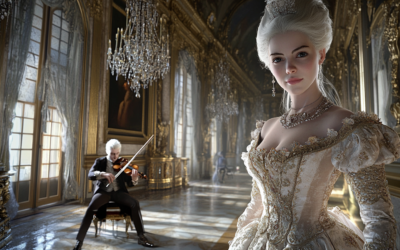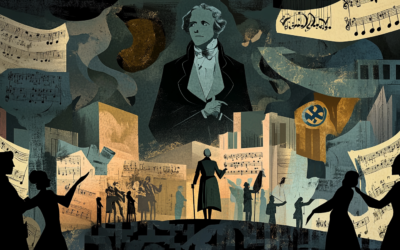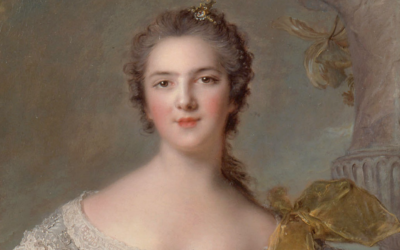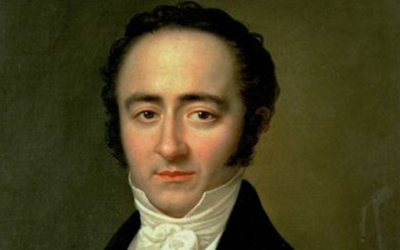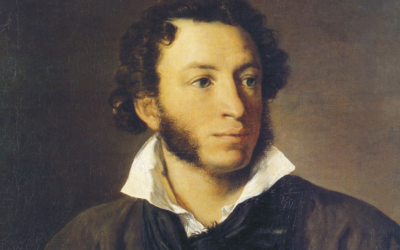Rewriting Mozart
A Revealing New Interview on His Thematic Catalogue
Introduction
Welcome to MozartrazoM, your source for in-depth research and fresh perspectives on Wolfgang Amadeus Mozart. We’re excited to present a brand-new interview that challenges many of the long-held assumptions about Mozart’s Thematic Catalogue (1784–1791). Conducted by Swedish journalist Henry Grynnsten, this conversation delves into groundbreaking forensic techniques—like advanced ink analysis and digital image processing—that may change the way we view Mozart’s late works.
"The fact is, once you start examining the Catalogue with modern tools, multiple authors become an extremely plausible reality. We see inconsistencies in the formation of musical clefs, discrepancies in the inks, and even vocabulary usage that doesn’t match Mozart’s letters."
Interview Excerpt
What You’ll Discover
- Surprising Inconsistencies: Learn how subtle differences in handwriting and ink usage raise questions about the Catalogue’s authenticity.
- Multiple Hands at Work?: Explore the possibility that Mozart’s Thematic Catalogue may have been compiled posthumously by different contributors, rather than by the composer himself.
- Far-Reaching Implications: Understand why re-evaluating the Thematic Catalogue could radically alter our view of Mozart’s late compositions—including the Clarinet Concerto and the “Jupiter” Symphony.
- Methodology and Technology: Gain insight into the cutting-edge forensic and digital analysis methods used by our team of musicologists and forensic specialists.
Curious to read the full story? Download the complete PDF below.
Click here to download the PDF interview (no registration required)
Meet the Researchers
The interview features Dr. Luca Bianchini, Dr. Anna Trombetta, and Prof. Martin Jarvis—a team of experts from the fields of musicology, palaeography, and forensic document examination. Their combined expertise offers a riveting new lens through which to study one of classical music’s most celebrated figures.
Interested in More?
- For detailed forensic evidence and further discussion, feel free to contact us directly.
- Follow us on social media for updates on upcoming articles, interviews, and events related to Mozart scholarship.
Join the Conversation
We’d love to hear your thoughts on these findings! Leave a comment below or share your reactions with us on social media. Let’s keep the dialogue alive and explore Mozart’s musical legacy from every possible angle.
Thank you for visiting MozartrazoM. We hope this interview sparks your curiosity and enriches your understanding of Mozart’s remarkable, yet still mysterious, life and work.
You May Also Like
The Kolb Concerto: A Mozartian Mirage?
The Kolb Concerto’s dubious origin and poor musical quality expose yet another myth in the Mozartian canon. If this is the work of a genius, then perhaps we’ve been fooled for centuries.
The Adélaïde Deception: Mozart’s “Lost” Violin Concerto and the Art of Musical Forgery
In the early 20th century, the “discovery” of Mozart’s sixth violin concerto in Paris created a sensation. Dubbed the Adélaïde Concerto and supposedly written for Madame Adélaïde of France, it was hailed as a testament to Mozart’s genius. However, as the story unfolds, it becomes clear that this masterpiece was not the work of the child prodigy but rather a carefully orchestrated hoax by Marius Casadesus. Despite its unmasking as a forgery, the concerto continues to captivate audiences, raising questions about authenticity and the music industry’s willingness to deceive for profit.
Mozart and the Nationalist Illusion: The 1931 Festival and Its Legacy
The Salzburg Festival, far from being a mere celebration of Mozart’s genius, was born out of nationalist ambitions during a turbulent period in Austro-German history. Conceived by figures like Max Reinhardt, Heinrich Damisch, and Friedrich Gehmacher, the festival was deeply rooted in ultranationalistic ideals, transforming Mozart’s legacy into a tool for cultural dominance. The truth behind its founding has long been obscured, but the primary sources tell a different, darker story.
K.6 and K.7 Sonatas: A Fabricated Genius?
The earliest sonatas of Wolfgang Amadeus Mozart, K.6 and K.7, are traditionally seen as proof of his precocious genius. But as we explore the murky origins of these works, we find that they may be more a product of Leopold Mozart’s ambition than Wolfgang’s musical talent. The truth, as always, lies somewhere between the notes.
Georg Nissen and the Missing Notebooks – Part II
This second part delves deeper into Georg Nissen’s scheme to expose the truth about Mozart’s death, and the roles of Constanze Mozart and her sons in keeping it buried. As new details emerge, the mystery surrounding the famous composer’s final days grows even darker, with powerful forces potentially at play.
Mozart and Salieri
Pushkin does not see Salieri as a mere mediocre. In fact, Salieri embodies the struggle of the artist, much like Michelangelo, who reaches greatness through relentless effort. Pushkin himself identifies with both Mozart and Salieri, but he emphasises that true art demands work, discipline, and sacrifice. In poisoning the Mozartian element within himself, Salieri performs a service to art, freeing it from the frivolity of effortless genius. ‘Can genius and malice coexist?’ Pushkin’s answer is complex, but in the end, Salieri’s act seems to affirm that true creation lies in the hands of those who strive.



